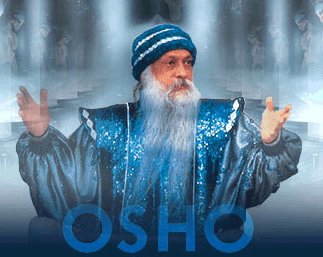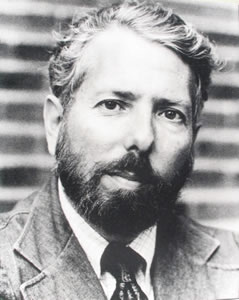
Violent and Unexplained CULTS
 Cults come in all shapes and sizes. They can be of any form of spirituality, from Christianity to the Occult, to Flying Saucer cults. They can appear strange and insular, while many do a great deal of charity work. Then we have the more sinister form of cult. Some of these make the headlines through mass suicide, but perhaps the most dangerous is the cult that ends up using extreme violence or intimidation. RAJNEESH FOUNDATION Typical was the Rajneesh Foundation of Bhagwan Shree Rajneesh. Born in India in 1931, he experienced a spiritual death and rebirth in 1953, going on to found his cult in Poona, near Bombay, in 1974. A mixture of humanistic psychology, meditation and sex, in 1981 he bought a 64,000 acre ranch in Oregon, living a life-style which included 93 Rolls Royces, surrounded by his four thosand followers. However, he was soon outgrowing his ranch and decided to take over the near by town of Antelope, wanting to call it Rajneeshpuran.  This involved various conspiracies with his lieutenant Ma Anand Sheela, including an attempt to assassinate a prosecutor (two British women were eventually jailed for this). Money was also ploughed in to buy up the businesses, even opening an airport to bring in his regular seven thousand festival visitors. However, his cult collapsed in 1985 amid faction fights and he left America following immigration and fraud trials. Believing that you could only be spiritual if you were rich, Rajneesh died in 1990, his ideas continuing with Osho, an organisation that runs hundreds of small centres through the world. AUM SHINRIKYO Undoubtedly the most violent modern cult was Aum Shinrikyo, or ‘supreme truth’, the ten thousand strong cult headquartered on the slopes of Mount Fuji, Japan, and headed by Shoko Asahara.  Determined to bring about Armageddon so that he could rule everyone, Aum Shinrikyo became a mixture of Buddhism, occultism and fascism. Fat, bearded and partially sighted, Asahara was born poor and was a bully, building up a huge stockpile of weapons and chemicals for his war. His cult was rounded up by armed police following a series of major crimes, the most infamous being his Sarin gas attack on the Tokyo underground on 20 March 1995, killing twelve and injuring thousands. The Japanese authorities later discovered that his cult was based on his committing sexual and physical atrocities on his own members. CHARLES MANSON Sometimes such cult activity is seen as straight forward crime, such as the Manson Family killings. Charles Manson had had a lifetime of abuse, crime and imprisonment. In the height of the 1960s he moved to California, becoming guru to a number of drug abusing hippies in a ranch in Death Valley. Believing himself to be Christ, he was convinced the Beatles song, Helter Skelter, was a coded reference to armageddon. One night in August 1969 he sent his followers out to brutally murder actress Sharon Tate, wife of Roman Polanski, and four others at their home. The following night they murdered Leno La Bianca and his wife. The Family was eventually arrested when follower, Susan Atkins, confessed to the crimes in prison. Manson remains in prison, unrepentant. NEGATIVITY What causes such violence to arise in cults? Upbringing can be seen to have a great impression on behaviour of guru and disciple, and, as such, the incidence of aggression. One large school of thought believes that being the recipient of violence in childhood predisposes the adult towards violence. This is feasible but fails to acknowledge an important element which usually goes alongside violence towards children - namely, a lack of affection. Basically, if a child does not receive affection, he will be unable to understand or recognise affection in others, resulting in an attitude to life based upon purely negative stimuli. This idea can be seen in most gurus, who often come from broken homes, often devise theologies based on the negative impulse of Armageddon, and do not recognise friends, only acquaintances. This anti-social tendency was noted in the mid-1950s by Dan MacDougald, an American penologist, who researched the behaviour of prison inmates. MacDougald became interested in the fact that we screen out thousands of impulses from our consciousness, being interested only in stimuli we subjectively decide is important. He argued that the criminal cut himself off from all positive stimuli and lives his life through a series of negative responses. The understanding of such notions as ‘love’, ‘hope’ or ‘responsibility’ was unknown to the hardened criminal. By giving inmates attention, MacDougald showed that an understanding of more positive feelings could be successfully encouraged. The argument here is that a person who does not receive affection will learn only how to hate. PSYCHOLOGICAL DISTANCING Concentrating on negative impulses due to lack of affection can cause further personality traits to rise due to the effect of culture upon the individual. Seeking out only the negative values in life can lead to an unwarranted hatred of particular types, such as homosexuals or ethnic minorities. People always realise the differences in such groups, but a stable upbringing allows positive stimuli to deter negative feelings towards them. Not so the person brought up without affection. He is all too ready to hate, and all too ready to become aggressive towards them. Such impulses are endemic in society and the phenomenon is known as aggression due to ‘distance’, the term used here to signify a lack of understanding. Culture naturally imposes negative stereotypes upon ‘differentness’. The impulse is usually thought to be due to lack of understanding, but it is most likely lack of affection which pushes the individual away from acceptance and co-existence, to aggression towards those who are different. INSULARITY And so too with cults. Here, insularity from the prevalent culture causes distanced to rise, hence furthering the aggressive responses of a guru to the population at large. As for the follower, the abuse meted out by the guru takes away affection. But as the guru is their god, their natural aggressive impulses back up that of the guru, being focused, also, against the outside population, resulting in gassing of the Tokyo underground system, or other atrocities. Such forces have become non-understandable and unimportant, so aggression towards them is natural. SOCIAL HIERARCHY Social hierarchy can also be seen to play its part in the control or use of cult aggression. Most animal societies are regulated by hierarchy and human society would devolve into chaos without rules and leaders. In particular, rules tend to lead to co-operative impulses. However, subordination to the rules and standards of a particular society can lead to a suppression of personal identity. Certain actions which an individual feels acceptable may be deemed unacceptable by the majority. Hence, an individual looses an element of himself, and this lacking can lead to alienation and eventual aggression. STANLEY MILGRAM The authority instilled by a hierarchy can alternatively be used to channel aggression through obedience - an obvious cult trait. The researcher Stanley Milgram showed this in an infamous experiment in the 1960s. An actor was strapped to a chair with fake electrodes attached to him. Subjects were told to ask him questions and if the response was wrong, they were to inflict an electric shock, rising in severity to the point that unconsciousness occurred.  The subjects were unaware that the shocks were nothing more than the actor screaming out in pain and eventually feigning unconsciousness. Yet only a minority refused to participate, and many were prepared to go on to induce severe pain and unconsciousness. NEGATING MORALITY Experiments such as this give insight into how a major element of a race could go on to construct death camps, and show genocide can so easily be instilled. One interesting factor gleaned by Milgram’s experiment concerned how the subjects side-stepped personal morality. They frequently asked if they were responsible for the pain being inflicted. Told that they were not, they were able to proceed. Responsibility had been passed to higher authority, such as a guru. Hence, a Nazi death camp guard can claim he was simply obeying orders. When an aggressive action is demanded by a leader, a human being can be compelled to obey. And the same principle can be seen in action when a criminal absolves himself from blame, claiming that it was society that made him do it. In his own mind, the stimuli was born from actions against HIM, rather than his actions against others; a point that can be seen in the life of Charles Manson, often referred to as a serial killer, but in actual fact, an archetypal cult guru. © Anthony North, October 2007 Article Link Source : Beyond The Blog Return Home : For more articles ... |
More can be addded on request. Direct your requests at vinit@theunexplainedmysteries.com